
Christian IX was King of Denmark from 15 November 1863 until his death in 1906. From 1863 to 1864, he was concurrently Duke of Schleswig, Holstein and Lauenburg.
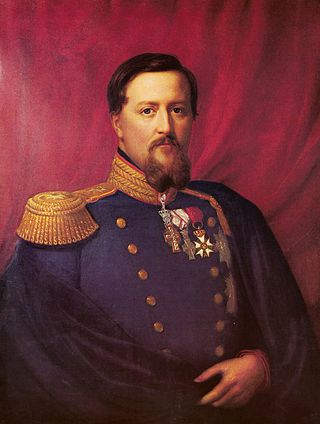
Frederick VII was King of Denmark from 1848 to 1863. He was the last Danish monarch of the older Royal branch of the House of Oldenburg and the last king of Denmark to rule as an absolute monarch. During his reign, he signed a constitution that established a Danish parliament and made the country a constitutional monarchy. Frederick's motto was Folkets Kærlighed, min Styrke.

Frederick I was King of Denmark and Norway. He was the last Roman Catholic monarch to reign over Denmark and Norway, when subsequent monarchs embraced Lutheranism after the Protestant Reformation. As king of Norway, Frederick is most remarkable in never having visited the country and was never crowned as such. Therefore, he was styled King of Denmark, the Vends and the Goths, elected King of Norway. Frederick's reign began the enduring tradition of calling kings of Denmark alternatively by the names Christian and Frederick, which has continued up to the reign of the current monarch, Margrethe II.
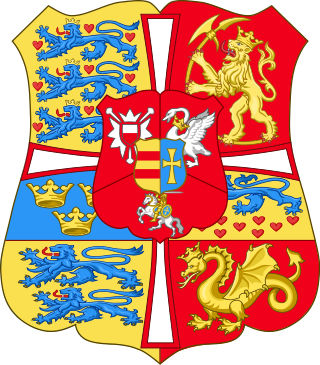
Frederick V was King of Denmark–Norway and Duke of Schleswig-Holstein from 6 August 1746 until his death in 1766. He was the son of Christian VI of Denmark and Sophie Magdalene of Brandenburg-Kulmbach.
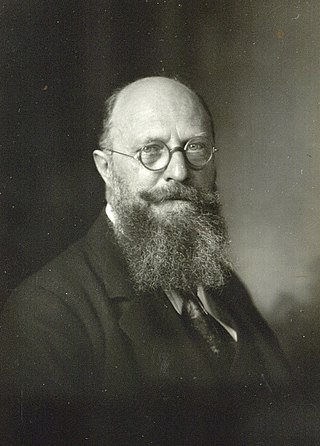
Thorvald August Marinus Stauning was the first social democratic Prime Minister of Denmark. He served as Prime Minister from 1924 to 1926 and again from 1929 until his death in 1942.

Peter Martin Orla Lehmann was a Danish statesman, a key figure in the development of Denmark's parliamentary government.

Adam Wilhelm Moltke, 3rd Count of Bregentved was a Danish nobleman, landowner, civil servant and politician, who in 1848–1852 was the first Prime Minister of Denmark under the new constitutional monarchy outlined in 1848 and signed as the Danish Constitution on 5 June 1849 by Frederick VII of Denmark.
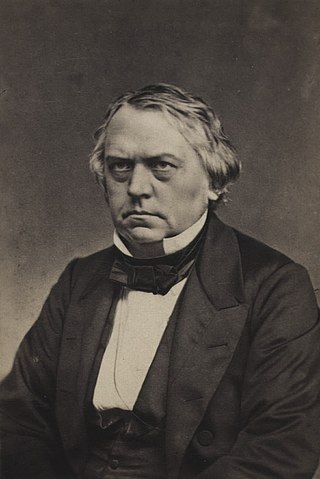
Ditlev Gothard Monrad was a Danish politician and bishop, and a founding father of Danish constitutional democracy; he also led the country as Council President in its huge defeat during the Second Schleswig War. Later, he became a New Zealand pioneer before returning to Denmark to become a bishop and politician once more.
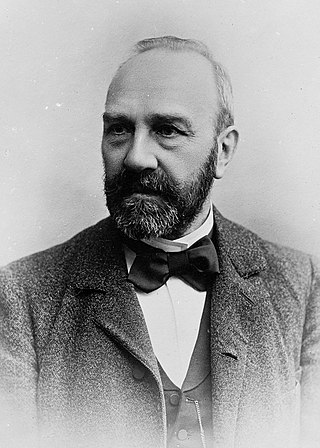
After the 1901 Danish Folketing election, the Council President Johan Henrik Deuntzer of the Venstre Reform Party became the leader of Denmark's first liberal government. The resulting cabinet, which replaced the Cabinet of Sehested consisting of members of the conservative party Højre, was formed on 24 July 1901 and was called the Cabinet of Deuntzer. The formation of the new cabinet is referred to in Danish as "systemskiftet", the shift of government.
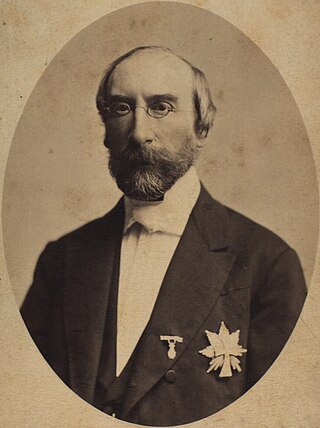
Minister for Iceland was a post in the Danish cabinet for Icelandic affairs.

The Moltke II cabinet was the government of Denmark from 16 November 1848 to 13 July 1851. It was also referred to as the November Cabinet.

Ove Rode was a Danish politician, writer, newspaper editor, and Minister of Interior Affairs for Det Radikale Venstre.
Kjeld Løwenstein Philip was a Danish economist and politician representing the Danish Social Liberal Party. He was Trade Minister from 1957 to 1960 as member of the Cabinet of H. C. Hansen II and the Cabinet of Viggo Kampmann I, Finance Minister from 1960 to 1961 as member of the Cabinets of Viggo Kampmann I and II and Minister for the Economy from 1961 to 1964 as member of the Cabinet of Viggo Kampmann II and the Cabinet of Jens Otto Krag I. He was member of the Danish parliament from 1960 to 1964. His wife, Grethe Philip (1916–2016) was a member of parliament 1960–1979.
The Society of the Friends of Peasants was a liberal Danish political society founded on 5 May 1846 by members of the provincial consultative assemblies Johan Christian Drewsen and Balthazar Christensen, with the intent to promote the liberation of the peasantry and equality among the different classes of society. Among its most politically influential members were Anton Frederik Tscherning, Jens Andersen Hansen and Carl Christian Alberti.
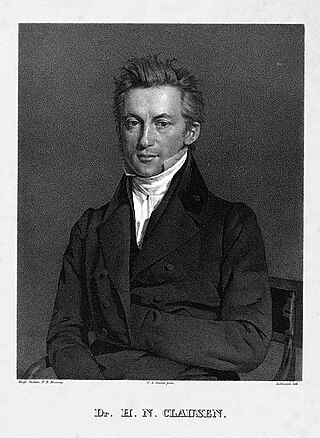
Henrik Nicolai Clausen was a Danish theologian and national liberal politician.

Andreas Frederik Krieger was a Danish politician, government minister, professor of law and supreme court judge. He was a member of the National Constitutional Assembly from 1848 to 1849, a member of the Folketing from 1849 to 1852 representing the National Liberal Party and a member of the Landsting from 1863 to 1890 representing first the National Liberal Party and later the conservative party Højre.

Caroline Amalie of Schleswig-Holstein-Sonderburg-Augustenburg was Queen of Denmark as the second spouse of King Christian VIII between 1839 and 1848.
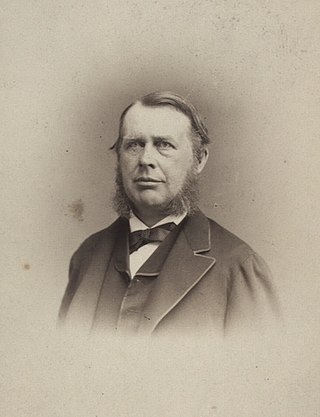
Frederik Georg Julius Moltke, Count of Bregentved, was a Danish landowner and politician.

The March Revolution in Denmark refers to the events of 1848 that ultimately led to the introduction of Danish constitutional monarchy and the Constitution of Denmark.
















